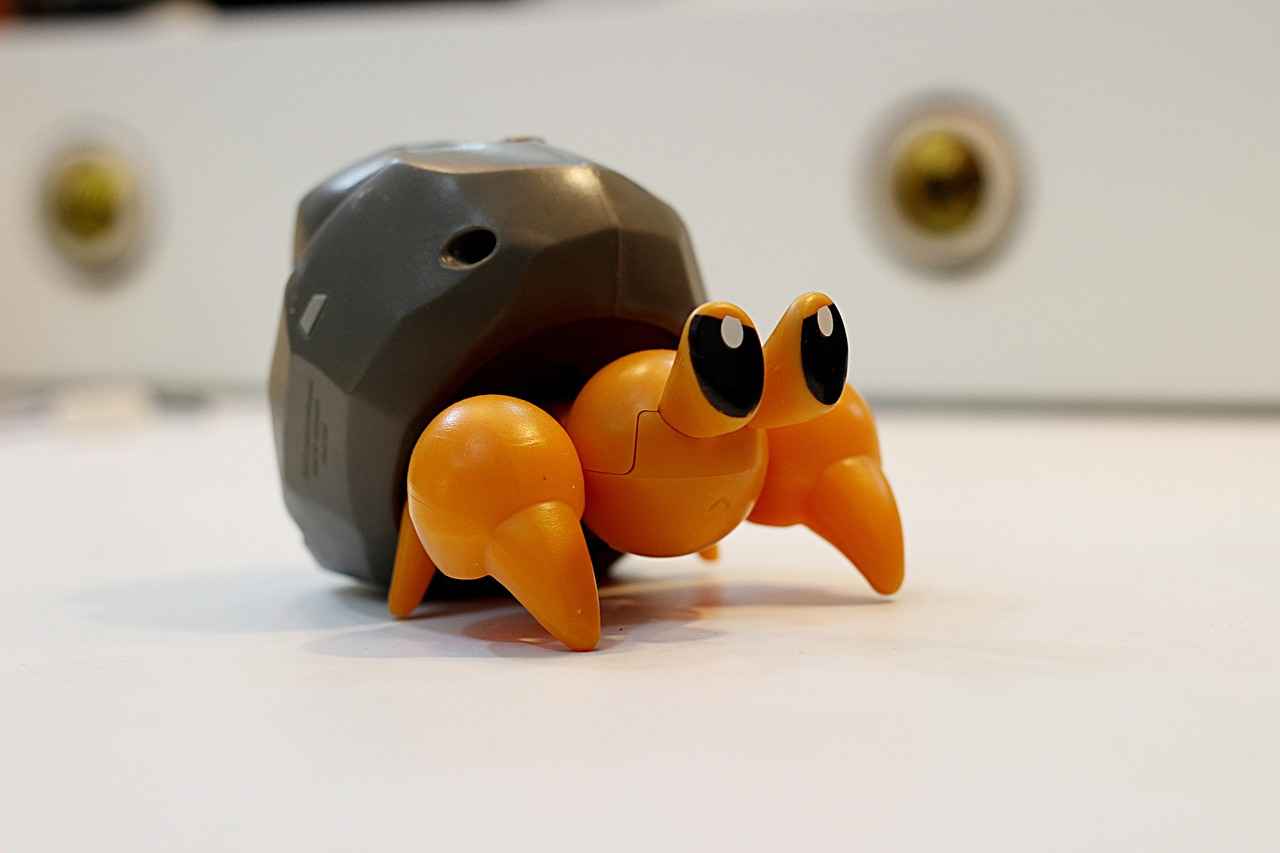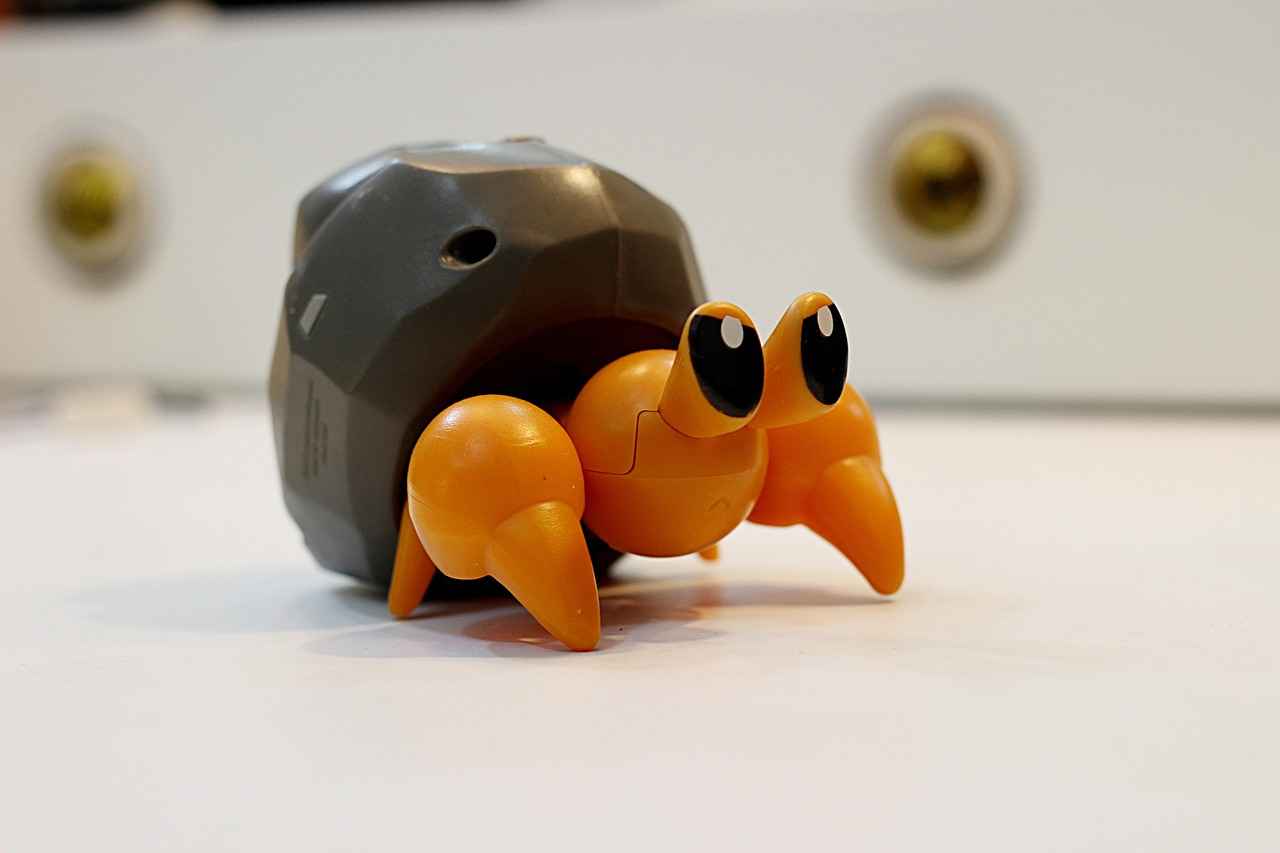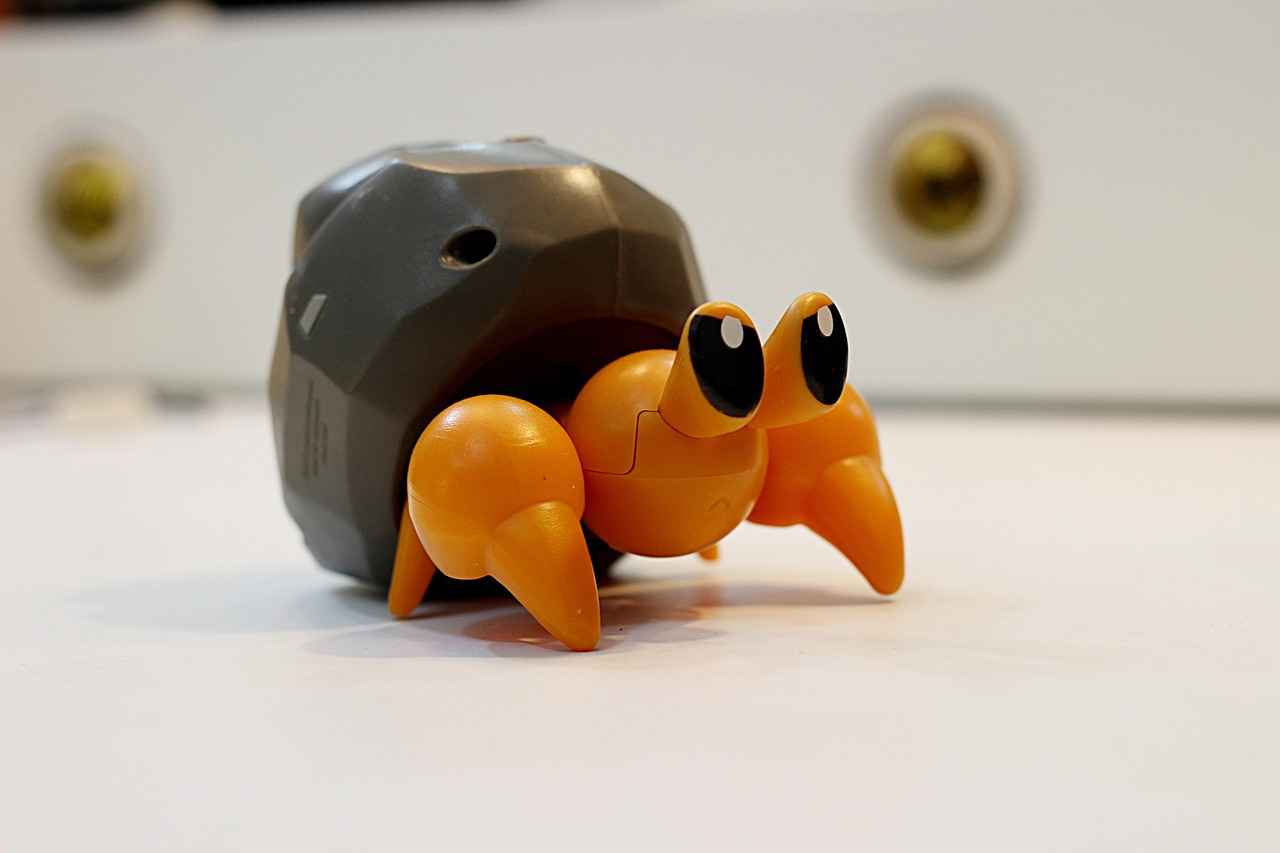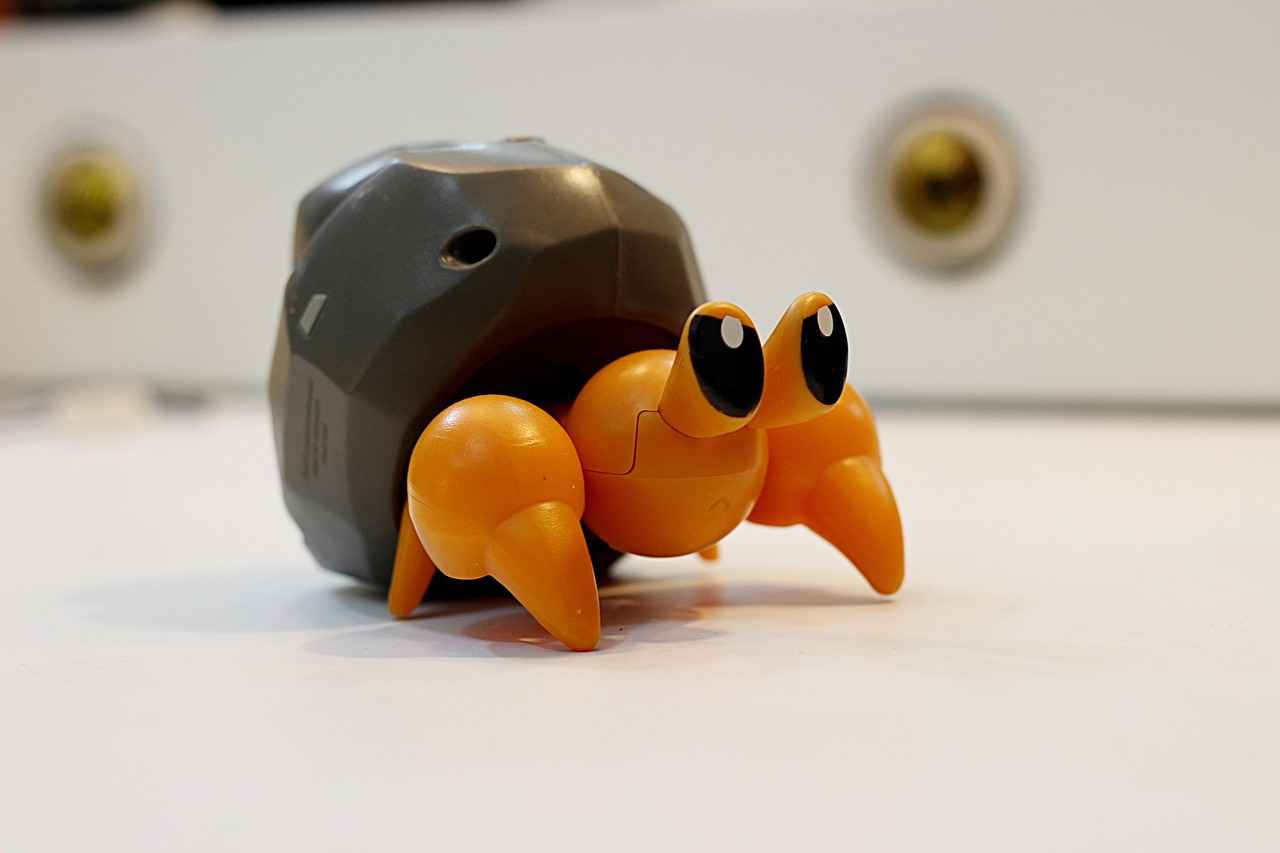This article provides a comprehensive overview of Dwebble, a fascinating Bug/Rock-type Pokémon introduced in Generation V. Dwebble is known for its unique ability to use rocks as armor, offering both defensive and offensive advantages in battles. This guide will explore Dwebble’s evolution, strengths, weaknesses, and effective battle strategies, helping trainers maximize their gameplay experience.
Understanding Dwebble: Basic Information
Dwebble is a small, crab-like Pokémon that thrives in rocky environments. Its dual typing gives it unique characteristics, making it an interesting choice for trainers looking to diversify their teams.
Evolution of Dwebble: From Dwebble to Crustle
Dwebble evolves into Crustle at level 34. This evolution not only enhances its stats significantly but also transforms its appearance, making it a more formidable opponent in battles.
Leveling Up: How to Evolve Dwebble
To evolve Dwebble, trainers need to ensure it reaches level 34. Engaging in battles and utilizing experience-boosting items can facilitate this process.
Best Training Methods for Dwebble
- Participate in trainer battles to gain experience.
- Use experience-boosting items like Lucky Eggs.
- Focus on battling Pokémon that Dwebble can effectively counter.
Optimal Moves for Dwebble Pre-Evolution
Before evolving, Dwebble can learn several powerful moves, including Rock Slide and Bug Bite, which are crucial for maximizing its battle potential.
Understanding Dwebble’s Abilities
Dwebble possesses abilities such as Sturdy and Shell Armor, granting it unique defensive capabilities that enhance its resilience during battles.
Dwebble’s Strengths and Weaknesses in Battle
As a Bug/Rock-type Pokémon, Dwebble has distinct strengths and weaknesses that trainers must consider when planning their battle strategies.
Strengths: What Dwebble Excels At
Dwebble’s dual typing provides resistance to various types of attacks, particularly Normal and Psychic, making it a challenging opponent in many matchups.
Weaknesses: Vulnerabilities to Consider
Despite its strengths, Dwebble is vulnerable to Water, Rock, and Steel-type moves, which trainers should be cautious of during battles to avoid taking significant damage.
Effective Battle Strategies for Dwebble
To maximize Dwebble’s potential in battles, trainers should employ strategies that leverage its strengths while mitigating its weaknesses.
Defensive Strategies: Utilizing Dwebble’s Abilities
Trainers can capitalize on Dwebble’s Sturdy ability to withstand a hit and set up defensive moves, allowing it to act as a wall for the team.
Offensive Strategies: Maximizing Damage Output
By equipping Dwebble with moves that exploit its typing, trainers can create powerful offensive strategies that catch opponents off guard and secure victories.
Conclusion: The Role of Dwebble in Competitive Play
In summary, Dwebble, with its unique abilities and strategic potential, holds a valuable position in competitive Pokémon battles. Understanding its strengths, weaknesses, and evolution can greatly enhance a trainer’s success.

Understanding Dwebble: Basic Information
Dwebble Pokémon: Evolution, Strengths, and Battle StrategiesDwebble is a fascinating Bug/Rock-type Pokémon that was introduced in Generation V. With its unique characteristics and abilities, Dwebble has captured the attention of trainers worldwide. This article delves into the various aspects of Dwebble, including its evolution, strengths, weaknesses, and effective battle strategies to help trainers maximize their gameplay experience.
Dwebble is known for its remarkable ability to utilize rocks as armor. This not only provides defensive advantages but also enhances its offensive capabilities during battles. Dwebble’s design is inspired by a hermit crab, which adds to its charm and uniqueness in the Pokémon universe.
Dwebble evolves into Crustle when it reaches level 34. This evolution significantly enhances its stats, including its defense and attack, making it a more formidable opponent in battles. The transformation also alters its appearance, giving it a more robust and intimidating look.
To successfully evolve Dwebble into Crustle, trainers need to focus on gaining experience points through battles and training. Engaging with wild Pokémon and utilizing experience-boosting items can streamline this process.
- Participate in battles against Pokémon that are lower in level.
- Use items like the Exp. Share to distribute experience more effectively.
- Engage in trainer battles for higher experience rewards.
Before evolving, Dwebble can learn several powerful moves such as Rock Slide and Bug Bite. These moves are essential for maximizing its battle potential and taking down opponents efficiently.
Dwebble possesses abilities like Sturdy and Shell Armor, which provide it with unique defensive capabilities. These abilities make Dwebble resilient in various battle scenarios, allowing it to withstand hits that would typically knock out other Pokémon.
As a Bug/Rock-type Pokémon, Dwebble has distinct strengths and weaknesses that trainers must consider when planning their battle strategies.
Dwebble’s dual typing grants it resistance to several types of attacks, including Normal and Psychic. This makes it a formidable opponent in many matchups, allowing it to absorb damage effectively.
Despite its strengths, Dwebble is vulnerable to Water, Rock, and Steel-type moves. Trainers should be cautious of these types during battles to avoid significant damage.
To maximize Dwebble’s potential in battles, trainers should employ specific strategies that leverage its strengths while mitigating its weaknesses.
Trainers can use Dwebble’s Sturdy ability to withstand a hit and set up defensive moves, allowing it to act as a wall for the team. This strategy can be particularly effective in longer battles.
By equipping Dwebble with moves that exploit its typing, trainers can create powerful offensive strategies that catch opponents off guard and secure victories. Utilizing moves like Rock Slide can deal significant damage to a wide range of opponents.
Dwebble, with its unique abilities and strategic potential, plays a valuable role in competitive Pokémon battles. Understanding its strengths, weaknesses, and evolution can greatly enhance a trainer’s success. By mastering Dwebble’s capabilities, trainers can turn this small but mighty Pokémon into a key player in their battle lineup.

Evolution of Dwebble: From Dwebble to Crustle
Dwebble is a fascinating Pokémon that captures the attention of trainers with its unique abilities and evolutionary potential. Evolving into Crustle at level 34, Dwebble not only undergoes a significant transformation in appearance but also sees an impressive boost in its overall stats. This evolution is key to enhancing its strategic value in battles, making it a worthwhile investment for any trainer.
The evolution from Dwebble to Crustle is a pivotal moment that trainers should prepare for. At level 34, Dwebble sheds its former shell and emerges as Crustle, a Pokémon that boasts greater defensive and offensive capabilities. This transformation not only alters its look but also significantly improves its base stats, including Attack and Defense, which are crucial for competitive play.
- Enhanced Stats: Crustle’s evolution provides a notable increase in HP, Attack, and Defense, making it more formidable in battles.
- New Abilities: Crustle gains access to new moves and abilities that can turn the tide of battle.
- Strategic Value: With its improved stats, Crustle can better withstand attacks and deal significant damage, making it a valuable asset to any team.
To ensure a smooth transition from Dwebble to Crustle, trainers should focus on effective training methods that maximize experience points. Engaging in battles, utilizing experience-boosting items, and carefully selecting opponents can expedite Dwebble’s leveling process. Understanding the right moves to learn before evolution, such as Rock Slide and Bug Bite, can also enhance Dwebble’s performance in its pre-evolution stage.
In summary, evolving Dwebble into Crustle is a strategic move that significantly enhances its battle capabilities. By understanding the evolution process and preparing adequately, trainers can unlock the full potential of this Bug/Rock-type Pokémon. Embracing this evolution not only changes Dwebble’s appearance but also elevates its role in competitive battles, making it a must-have for serious trainers.
Leveling Up: How to Evolve Dwebble
To successfully evolve Dwebble into its next form, Crustle, trainers must ensure that Dwebble reaches level 34. This evolution is not only a significant milestone in Dwebble’s journey but also enhances its overall stats, making it a more formidable contender in battles.
Understanding how experience points (XP) work is essential for trainers looking to evolve Dwebble efficiently. Dwebble gains XP through various activities, including:
- Winning battles against wild Pokémon
- Defeating trainers in gym battles
- Using experience-boosting items like Lucky Eggs
- Participating in special events or raids
To facilitate a smooth evolution process, trainers should consider implementing effective training methods. Here are some strategies to maximize Dwebble’s XP gain:
1. Focus on battling Pokémon that are weak to Dwebble's Bug/Rock typing.2. Form a balanced team to cover Dwebble's weaknesses, allowing it to survive longer in battles.3. Engage in double battles to gain more XP in a single match.
Additionally, trainers should be aware of the moves Dwebble can learn before its evolution. Moves like Rock Slide and Bug Bite are particularly useful, providing both offensive capabilities and tactical advantages in battles.
Ultimately, reaching level 34 is a crucial step in Dwebble’s evolution into Crustle, which not only boosts its stats but also transforms its appearance and battle strategy. By understanding experience points and employing effective training methods, trainers can ensure a smooth transition for their Pokémon, maximizing its potential in competitive play.
Best Training Methods for Dwebble
Dwebble is a unique Bug/Rock-type Pokémon, and understanding the best methods to train it is essential for any aspiring Pokémon trainer. In this section, we will explore effective training strategies that can help Dwebble level up quickly and evolve into its more powerful form, Crustle.
To maximize Dwebble’s potential, trainers should focus on the following strategies:
- Utilizing Experience-Boosting Items: Items such as Exp. Share and Lucky Egg can significantly enhance the experience points Dwebble gains from battles. These items allow Dwebble to level up faster, ensuring it reaches level 34 for evolution.
- Engaging in Battles Against Suitable Opponents: Choosing opponents that are weaker than Dwebble will provide an easier victory, allowing it to gain experience without taking excessive damage. Focus on battling Pokémon that are susceptible to Bug and Rock-type moves.
- Participating in Trainer Battles: Trainer battles often yield more experience points than wild encounters. Seek out trainers with lower-level Pokémon to ensure a swift victory and maximum experience gain.
- Utilizing Rare Candies: While they are limited in availability, using Rare Candies can provide an instant level-up for Dwebble. This can be particularly useful if it’s close to evolving.
- Training in Areas with High Encounter Rates: Choose locations where wild Pokémon appear frequently. This increases the number of battles Dwebble can participate in, accelerating its leveling process.
In summary, by employing these effective training methods, trainers can ensure that Dwebble evolves into Crustle at the optimal time, enhancing its abilities and strategic value in battles. Remember, the key to success lies in combining experience-boosting items with strategic battles against suitable opponents.
Optimal Moves for Dwebble Pre-Evolution
Dwebble is a fascinating Pokémon known for its unique Bug/Rock typing and defensive capabilities. Before it evolves into Crustle, Dwebble has access to a range of powerful moves that can significantly enhance its battle effectiveness. Understanding these moves is crucial for trainers looking to maximize Dwebble’s potential in various combat scenarios.
Before evolving, Dwebble can learn several potent moves that are essential for maximizing its battle potential. Here are some of the key moves:
- Rock Slide: This move is invaluable for dealing significant damage to Flying, Bug, and Fire-type Pokémon. Its ability to hit multiple opponents in double battles makes it a strategic choice.
- Bug Bite: A powerful STAB (Same Type Attack Bonus) move, Bug Bite allows Dwebble to deal substantial damage while also potentially stealing held items from opponents, adding an element of surprise.
- Sand Attack: While not a damaging move, Sand Attack can lower an opponent’s accuracy, making it easier for Dwebble to withstand attacks and set up its own strategy.
- Shell Smash: This move boosts Dwebble’s Attack, Special Attack, and Speed at the cost of some Defense and Special Defense, making it a risky but rewarding option for aggressive play.
Utilizing these moves effectively can significantly enhance Dwebble’s performance in battles. Trainers should focus on combining offensive and defensive strategies to leverage Dwebble’s unique typing and abilities.
In summary, mastering Dwebble’s pre-evolution moves is essential for trainers aiming to evolve it into Crustle. By understanding and utilizing moves like Rock Slide and Bug Bite, trainers can ensure that Dwebble is well-prepared for the challenges it will face in its evolutionary journey.
Understanding Dwebble’s Abilities
Dwebble Pokémon: Evolution, Strengths, and Battle StrategiesThis article provides an in-depth look at Dwebble, exploring its evolution, strengths, weaknesses, and effective battle strategies to help trainers maximize their gameplay experience.
Dwebble, a Bug/Rock-type Pokémon, showcases remarkable defensive capabilities that set it apart in the competitive Pokémon landscape. Its abilities, Sturdy and Shell Armor, offer unique advantages during battles, making Dwebble a resilient choice for trainers.
The Sturdy ability ensures that Dwebble cannot be knocked out in one hit, allowing it to withstand powerful attacks from opponents. This ability is particularly useful against formidable foes, giving trainers the opportunity to retaliate or set up strategies without the immediate threat of being defeated.
On the other hand, Shell Armor provides Dwebble with an additional layer of protection by preventing critical hits. This ability is crucial in high-stakes battles where every point of damage counts, as it mitigates the risk of taking unexpected heavy damage from opponents’ critical strikes.
Both of these abilities make Dwebble a versatile Pokémon in various battle scenarios, allowing trainers to adopt different strategies based on the situation. For instance, using Dwebble as a defensive wall can effectively stall opponents while providing opportunities for teammates to capitalize on the situation.
Furthermore, Dwebble’s access to a diverse move set, including moves like Rock Slide and Bug Bite, enhances its offensive capabilities, allowing it to deal significant damage while also maintaining its defensive strengths. This duality makes Dwebble a valuable asset in any team composition.
In summary, Dwebble’s abilities, combined with its unique typing and move set, create a Pokémon that is not only resilient but also strategically versatile. Trainers who understand how to leverage Dwebble’s strengths and mitigate its weaknesses can significantly enhance their competitive gameplay experience.

Dwebble’s Strengths and Weaknesses in Battle
Dwebble, as a Bug/Rock-type Pokémon, presents a unique set of strengths and weaknesses that trainers must navigate to optimize their battle strategies. Understanding these characteristics is crucial for both casual and competitive players.
- Type Resistance: Dwebble has a natural resistance to Normal and Psychic attacks, allowing it to withstand moves that would typically be more damaging to other Pokémon.
- Defensive Capabilities: With abilities like Sturdy and Shell Armor, Dwebble can absorb hits that would knock out less resilient Pokémon, making it an effective wall in battles.
- Strategic Moves: Dwebble can learn moves such as Rock Slide and Bug Bite, which are advantageous against a variety of opponents, allowing it to deal significant damage while also defending itself.
- Type Weakness: Dwebble is particularly vulnerable to Water, Rock, and Steel type moves, which can deal substantial damage and potentially incapacitate it in battle.
- Limited Speed: As a slower Pokémon, Dwebble may struggle against faster opponents, making it essential for trainers to anticipate enemy moves and plan accordingly.
In summary, Dwebble’s unique combination of strengths and weaknesses offers trainers a variety of strategic possibilities in battle. By leveraging its defensive abilities while being cautious of its vulnerabilities, trainers can effectively utilize Dwebble to enhance their competitive play. Understanding these dynamics not only improves gameplay but also enriches the overall experience of training and battling with this distinctive Pokémon.
Strengths: What Dwebble Excels At
Dwebble is a unique Pokémon that showcases remarkable strengths in battles due to its dual typing of Bug and Rock. This combination not only enhances its defensive capabilities but also provides it with a tactical advantage against various opponents.
Dwebble’s dual typing grants it notable resistances, particularly against Normal and Psychic type attacks. These resistances allow Dwebble to withstand hits that would severely damage other Pokémon. This resilience makes it a formidable opponent in many matchups, especially when facing foes that rely heavily on these types of moves.
- Resistance to Normal Attacks: Dwebble’s Bug typing allows it to take reduced damage from Normal-type moves, which are commonly used in various battle scenarios.
- Resistance to Psychic Attacks: The Rock typing offers a significant advantage against Psychic-type Pokémon, enabling Dwebble to counter their strategies effectively.
- Defensive Capabilities: With abilities like Sturdy and Shell Armor, Dwebble can absorb hits that would knock out less resilient Pokémon, providing opportunities for counterattacks.
Furthermore, Dwebble’s access to a diverse movepool allows it to exploit its strengths in battle. Moves like Rock Slide and Bug Bite not only take advantage of its typing but also inflict substantial damage on opponents vulnerable to these types.
In addition to its resistances, Dwebble’s ability to set up defensive strategies enhances its role in team compositions. By using moves that bolster its defenses or create barriers, Dwebble can effectively serve as a wall, protecting more fragile teammates from incoming damage.
Overall, Dwebble’s strengths make it a valuable asset in any trainer’s roster. Understanding how to leverage these advantages can lead to significant victories in battles.
Weaknesses: Vulnerabilities to Consider
Dwebble, the Bug/Rock-type Pokémon, is known for its unique abilities and strategic potential in battles. While it has several strengths, it also has notable weaknesses that trainers must be aware of to ensure successful gameplay. Understanding these vulnerabilities can significantly impact battle outcomes and team composition.
Despite Dwebble’s impressive defensive capabilities, it is particularly susceptible to certain types of moves. Specifically, Dwebble is weak against Water, Rock, and Steel-type attacks. This weakness can be a critical factor during battles, as these types can inflict significant damage on Dwebble, potentially leading to a swift defeat.
- Water-type Moves: Moves like Surf and Hydro Pump can deal substantial damage to Dwebble, exploiting its vulnerability. Trainers should be cautious when facing Water-type Pokémon, as they can quickly turn the tide of battle.
- Rock-type Moves: Although Dwebble itself is a Rock-type Pokémon, it is still vulnerable to stronger Rock-type moves. Attacks like Stone Edge can be particularly devastating, especially from opponents with higher attack power.
- Steel-type Moves: Steel-type moves, such as Iron Tail or Steel Wing, can also pose a significant threat to Dwebble, dealing heavy damage and potentially knocking it out before it can retaliate.
To mitigate these weaknesses, trainers should consider pairing Dwebble with Pokémon that can counter these types effectively. Utilizing strategic switches and defensive tactics can help protect Dwebble from these vulnerabilities, allowing it to shine in battle.
In conclusion, while Dwebble has several strengths that make it a valuable asset in competitive play, being aware of its weaknesses is crucial. By understanding and preparing for these vulnerabilities, trainers can enhance their battle strategies and improve their chances of victory.

Effective Battle Strategies for Dwebble
Dwebble is a fascinating Bug/Rock-type Pokémon that can be a formidable asset in battles when trained effectively. To truly maximize Dwebble’s potential, trainers must employ a variety of strategies that not only highlight its strengths but also address its vulnerabilities. Below are some effective battle strategies for Dwebble that can help trainers achieve success in competitive play.
One of Dwebble’s key advantages is its Sturdy ability, which allows it to survive a potentially fatal blow. This can be particularly useful in high-stakes battles. Trainers can capitalize on this by:
- Setting up defensive moves: Moves like Stealth Rock can be used to chip away at opponents’ health over time.
- Using status moves: Techniques such as Sand Attack can lower the opponent’s accuracy, providing Dwebble with a tactical edge.
While Dwebble is a capable defender, it can also dish out significant damage when used offensively. Trainers should consider the following:
- Leveraging dual typing: Utilizing moves like Rock Slide and Bug Bite can exploit opponents’ weaknesses, allowing Dwebble to hit hard.
- Item selection: Equipping Dwebble with items like Choice Band can enhance its attack power, making its moves even more threatening.
To further enhance Dwebble’s effectiveness, trainers should consider its role within the team. Pairing Dwebble with Pokémon that can cover its weaknesses, such as Water and Steel-type moves, can create a balanced strategy. This not only provides Dwebble with protection but also allows it to shine in its unique role as a defensive wall and offensive threat.
In conclusion, by employing these effective battle strategies, trainers can maximize Dwebble’s potential, ensuring that it plays a crucial role in their Pokémon battles. Understanding how to balance its strengths and weaknesses will ultimately lead to greater success in competitive play.
Defensive Strategies: Utilizing Dwebble’s Abilities
Dwebble’s Defensive Strategies: Utilizing Its AbilitiesDwebble, the Bug/Rock-type Pokémon, is renowned for its unique defensive capabilities, primarily due to its Sturdy ability. This ability allows Dwebble to endure a potentially fatal blow, making it an exceptional choice for trainers looking to establish a strong defensive presence in battles. Here, we will explore various defensive strategies that can be employed to maximize Dwebble’s potential as a wall for your team.
- Sturdy Ability Utilization: Dwebble’s Sturdy ability ensures that it can survive any single hit, provided it is at full health. This gives trainers the opportunity to set up defensive moves like Stealth Rock or Spikes, which can hinder opponents as they switch in.
- Shell Armor: In addition to Sturdy, Dwebble can have the Shell Armor ability, which prevents critical hits. This further enhances its durability, allowing it to withstand stronger attacks that could otherwise be devastating.
- Defensive Moveset: Trainers should equip Dwebble with moves such as Protect and Rock Blast. Protect allows Dwebble to scout opponent moves while Rock Blast can deal consistent damage while benefiting from STAB (Same Type Attack Bonus).
- Item Choices: Equipping Dwebble with items like Leftovers can provide gradual healing, enhancing its longevity during battles. Alternatively, Focus Sash can be used to ensure Dwebble survives a hit, allowing it to retaliate effectively.
- Team Synergy: Dwebble works best in teams that can cover its weaknesses, particularly against Water, Rock, and Steel-type moves. Pairing Dwebble with Pokémon that can absorb these types of hits can create a formidable defensive core.
In conclusion, by leveraging Dwebble’s Sturdy ability alongside a carefully crafted moveset and team synergy, trainers can effectively transform Dwebble into a robust defensive wall. This strategy not only protects your team but also creates opportunities to set up and control the flow of battle, ensuring a higher chance of victory against formidable opponents.
Offensive Strategies: Maximizing Damage Output
Dwebble is a fascinating Bug/Rock-type Pokémon that can be a game-changer in battles when utilized effectively. To truly maximize its potential, trainers must focus on offensive strategies that take advantage of Dwebble’s unique typing and move set. By doing so, they can create tactics that not only deal significant damage but also catch opponents off guard.
- Type Advantage Moves: Dwebble can learn powerful moves like Rock Slide and Bug Bite. These moves exploit its Bug and Rock typing, allowing it to deal super-effective damage against common foes. For instance, using Rock-type moves against Flying or Fire-type Pokémon can quickly turn the tide in your favor.
- Strategic Move Selection: It’s essential to equip Dwebble with moves that not only deal damage but also provide additional effects. Moves like Stealth Rock can set up hazards for opposing Pokémon, while X-Scissor offers a reliable STAB (Same Type Attack Bonus) option that can hit hard.
- Utilizing Status Moves: Incorporating moves that induce status effects, such as Sticky Web, can hinder the opponent’s speed, allowing Dwebble to outspeed and strike first. This can be particularly effective in competitive play, where speed often determines the outcome of a battle.
- Item Synergy: Trainers should consider equipping Dwebble with items like Focus Sash to ensure it survives a potential knockout hit. This allows Dwebble to retaliate with a powerful move, potentially swinging the momentum of the battle.
- Predicting Opponent Moves: A crucial aspect of offensive strategy is predicting the opponent’s moves. By anticipating switches or defensive plays, trainers can use Dwebble’s moves to hit hard when the opponent is least prepared, maximizing damage output.
In conclusion, by equipping Dwebble with moves that exploit its typing and leveraging its unique abilities, trainers can develop effective offensive strategies that not only deal substantial damage but also enhance overall team performance. Mastering these strategies can lead to unexpected victories and a rewarding gameplay experience.

Conclusion: The Role of Dwebble in Competitive Play
Dwebble, the Bug/Rock-type Pokémon introduced in Generation V, has garnered attention in the competitive scene due to its unique abilities and strategic potential. This article aims to provide a comprehensive overview of Dwebble, focusing on its evolution, strengths, weaknesses, and effective battle strategies that can significantly enhance a trainer’s gameplay experience.
Dwebble is notable for its ability to use rocks as armor, which offers both defensive and offensive advantages in battles. Its unique typing allows it to resist several types of moves, making it a valuable asset in various matchups.
Dwebble evolves into Crustle at level 34. This evolution not only enhances its stats significantly but also transforms its appearance, increasing its strategic value in competitive play.
To evolve Dwebble into Crustle, trainers must focus on reaching level 34 through battles and experience points. Understanding the mechanics of leveling up is crucial for a smooth evolution process.
- Engage in battles against Pokémon with lower levels to gain quick experience.
- Utilize experience-boosting items like Exp. Share to enhance leveling speed.
Before evolving, Dwebble can learn powerful moves such as Rock Slide and Bug Bite, which are essential for maximizing its battle potential.
Dwebble possesses abilities like Sturdy and Shell Armor, providing it with unique defensive capabilities, making it resilient in various battle scenarios.
As a Bug/Rock-type Pokémon, Dwebble has distinct strengths and weaknesses that trainers must consider when planning their battle strategies.
Dwebble’s dual typing grants it resistance to several types of attacks, including Normal and Psychic, making it a formidable opponent in many matchups.
Despite its strengths, Dwebble is vulnerable to Water, Rock, and Steel-type moves, which trainers should be cautious of during battles to avoid significant damage.
To maximize Dwebble’s potential in battles, trainers should employ specific strategies that leverage its strengths while mitigating its weaknesses.
Trainers can take advantage of Dwebble’s Sturdy ability to withstand a hit and set up defensive moves, allowing it to act as a wall for the team.
By equipping Dwebble with moves that exploit its typing, trainers can create powerful offensive strategies that catch opponents off guard and secure victories.
In conclusion, Dwebble plays a valuable role in competitive Pokémon battles. With its unique abilities and strategic potential, understanding its strengths, weaknesses, and evolution is essential for trainers aiming for success in the Pokémon arena. Utilizing effective training methods and battle strategies can significantly enhance Dwebble’s performance, making it a worthy addition to any team.
